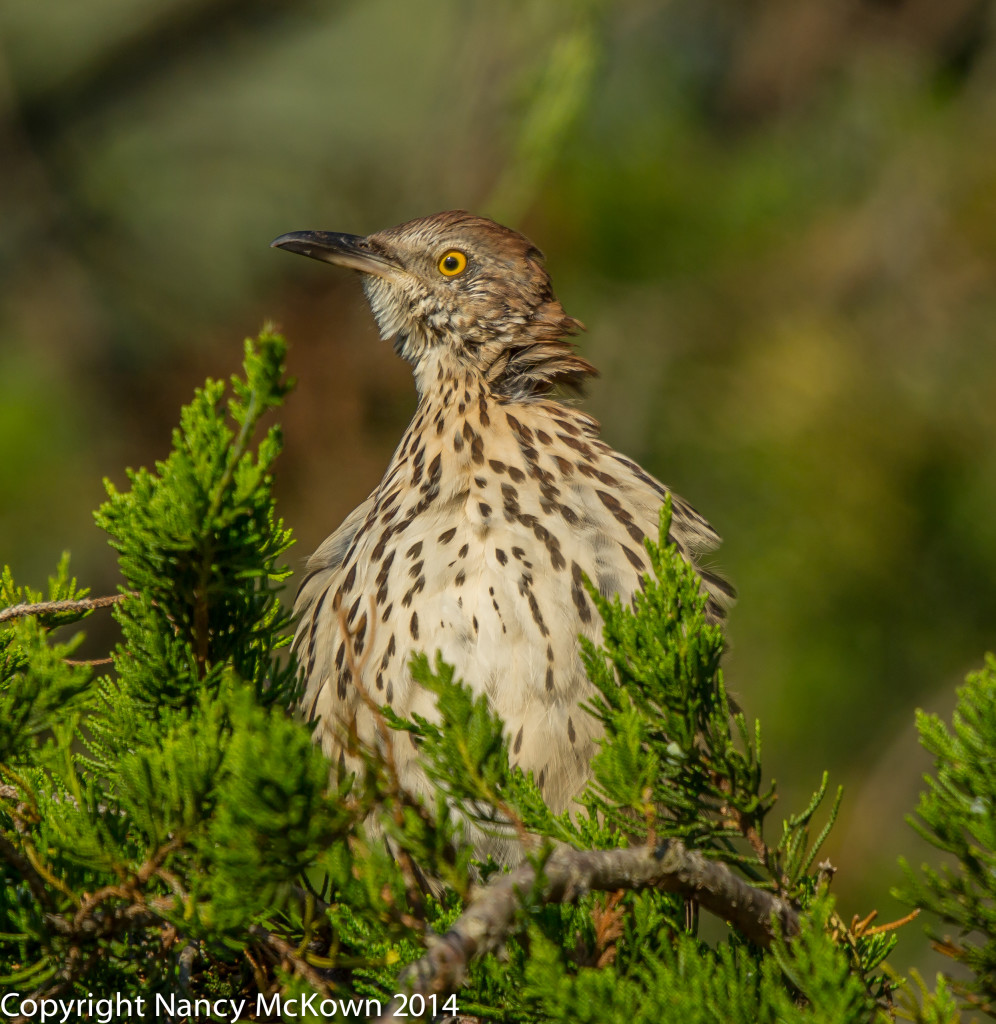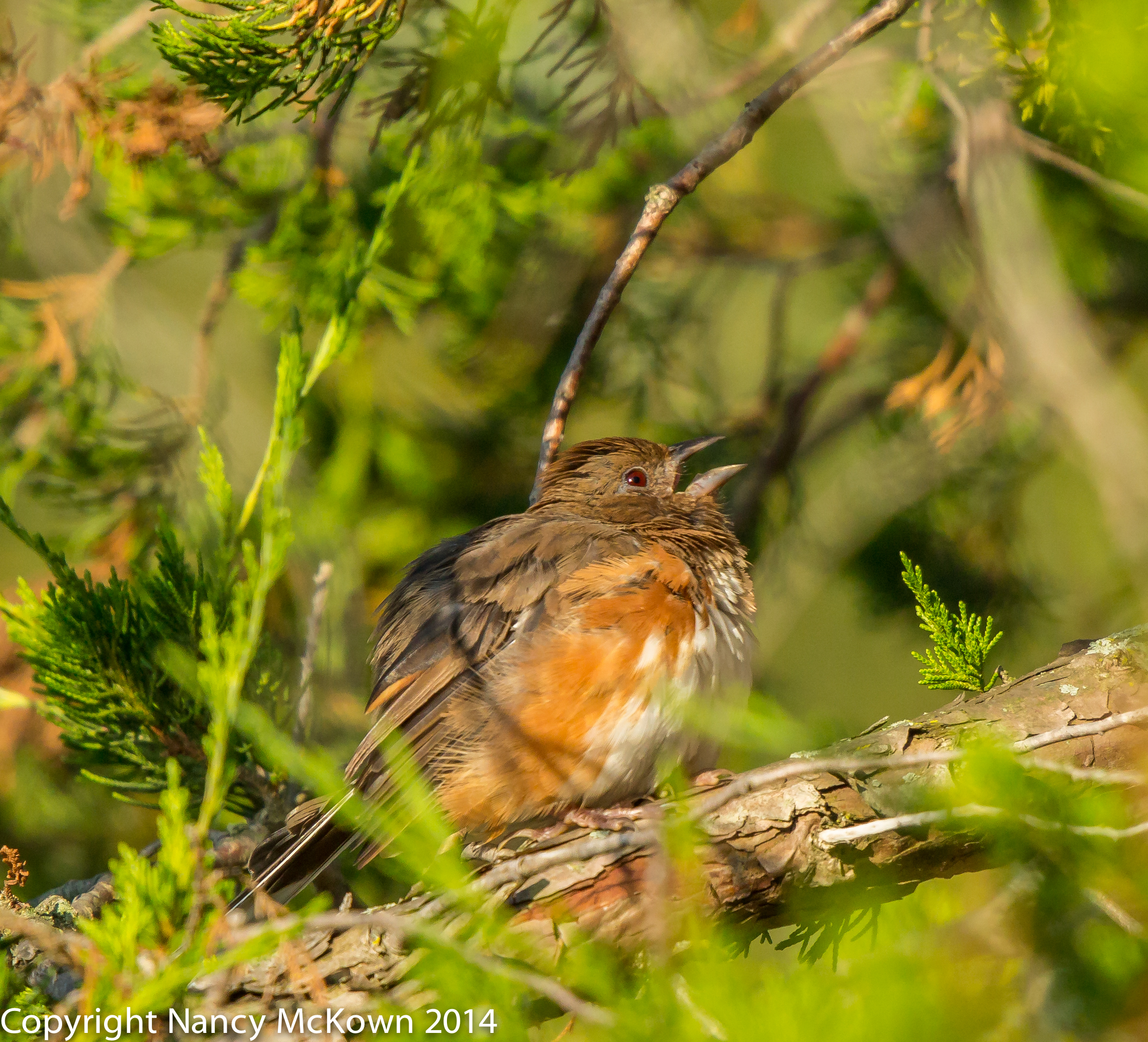Photographing Brown Thrashers
I came upon two Brown Thrashers skulking in a rather dense and tangled bush in the Allegan State Game Area. By the sound of the songs and calls coming out of the bush, I thought I had discovered the nests of many bird species. As I watched and listened, it soon became apparent that one bold Brown Thrasher, nestled at the top of the bush, was doing all the singing.

A Bird of With a Repertoire of Many Songs, Calls and Whistles.
ISO 320; f/9; 1/1000 Second
Camera Angle
I looked up at the crooning Brown Thrasher from the driver’s seat of my car, while my lens rested on the open door window. I knew the bird would vanish if I opened my car door and got out to reposition the camera on a tripod. My camera and monster lens are too heavy to reliably hold still, so I needed to rest the weight on the window. In order to be able to point the lens up high enough to focus on the bird and still be able to look through the viewfinder, I moved the car seat to its lowest setting and scrunched my body down into the seat.
Low Angle Perspective
Perspective changes the feel of a photograph. A “low angle” shot is where the camera is positioned anywhere below the eye line. If the distance is right between the lens and subject, I am always ready contort my head and body into position, if that what it takes to get the shot. (NOTE: My experience has been that opportunities to take eye level photographs of birds do not come around that often.)
Despite the problem with the high perch, the other conditions were good. Mid morning light was behind me, the bird’s pose was engaging and the background colors exceptional.
The second photo (below) shows a juvenile Brown Thrasher snuggling in the brush, appearing rather vulnerable as he looks up in search of his parent. This was an easier shot because the bird was positioned close to eye level. The cluttered brushy background is not ideal, but I like the colors of the Thrasher displayed in this side pose and the way the bird fluffs his feathers and bundles himself in a ball.

ISO 640; f/9; 1/1000 Second.
Bird Mimicry
Brown Thrashers are rather gangly secretive birds that do a good job of staying hidden, even though the bold copper wings and heavy dark streaking on their white breasts don’t exactly blend. Once you spot movement in a bush, their glaring bright yellow eyes and slightly downturned beak are easy to pick out. Brown Thrashers are most noticeable when they sing because they don’t just sing one or two songs. Generally they repeat a phrase twice, pause and then start again with a different tune. This bird in the top photo was showing off by singing complex songs with radical changes in volume, tempo, tone, pitch.
Avian Acoustics
When you hear birdsong that radically and continually switches from one song to another, it’s a pretty good indication that you’re listening to a mimic. Brown Thrashers are a species of bird (along with catbirds, blue jays, crows, starlings, and mocking birds) that imitate the songs and sounds other birds make. The males can have a repertoire of over 1000 sounds.
Brown Thrashers not only mimic other birds, they also imitate sounds that are not from nature, like construction noise and doorbells.
To learn more about bird mimicry, visit this link.









